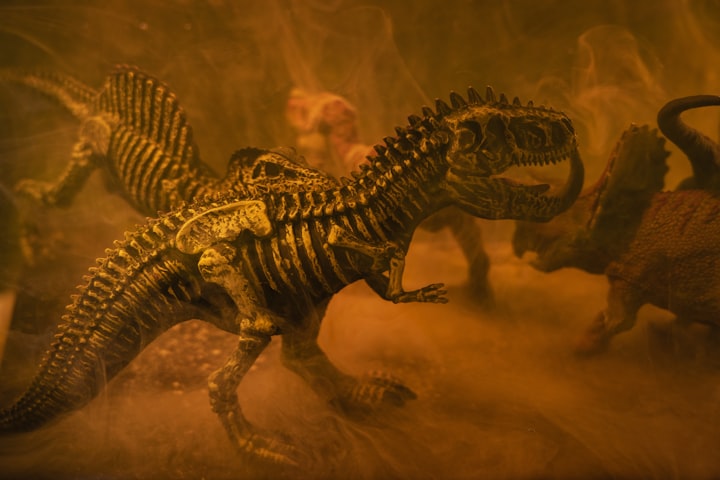
The history of dinosaurs spans millions of years, from their emergence in the Late Triassic period to their extinction at the end of the Cretaceous period. These magnificent creatures ruled the Earth for a substantial period and left an indelible mark on our planet's history. Let's explore the fascinating journey of dinosaurs in a thousand words.
Dinosaurs first appeared around 230 million years ago during the Late Triassic period. They evolved from a group of reptiles known as archosaurs, which also included crocodiles and birds. The earliest dinosaurs were relatively small and walked on two legs. They were not the dominant creatures of their time, as other reptiles and amphibians still thrived.
Over time, dinosaurs diversified and evolved into a wide array of species, occupying various ecological niches. They adapted to different habitats, ranging from lush forests to arid deserts. Dinosaurs could be herbivorous or carnivorous, depending on their diet, and they displayed a remarkable range of sizes, from the tiny Microraptor to the enormous Argentinosaurus.
During the Jurassic period, which began around 201 million years ago, dinosaurs continued to flourish and spread across the planet. This era witnessed the emergence of iconic dinosaurs like Stegosaurus, Allosaurus, and Brachiosaurus. The Jurassic period is often referred to as the "Age of Dinosaurs" due to the abundance and diversity of these creatures.
The Cretaceous period, which followed the Jurassic, was another crucial phase in dinosaur history. This period saw the rise of new dinosaur species and the further evolution of existing ones. Some notable dinosaurs from this era include Triceratops, Tyrannosaurus rex, and Velociraptor. The apex predator T. rex, with its powerful jaws and massive size, remains one of the most iconic dinosaurs to this day.
During the late Cretaceous period, approximately 65 million years ago, a catastrophic event occurred that forever changed the course of dinosaur history. It is widely believed that a massive asteroid impact in what is now the Yucatan Peninsula, Mexico, caused widespread devastation. The impact triggered a series of events, including massive earthquakes, volcanic eruptions, and wildfires. The resulting dust and debris blocked out sunlight, leading to a significant drop in global temperatures, a phenomenon known as an impact winter.
This catastrophic event, often referred to as the Cretaceous-Paleogene (K-Pg) extinction event, had a profound impact on life on Earth. The sudden and severe environmental changes resulted in the extinction of numerous plant and animal species, including the non-avian dinosaurs. The exact mechanisms of dinosaur extinction are still the subject of scientific research and debate, but the K-Pg event is considered a significant contributing factor.
After the extinction of dinosaurs, the world entered a new era known as the Cenozoic era, characterized by the rise of mammals. The extinction of dinosaurs opened up ecological niches that mammals eventually filled, leading to their diversification and eventual dominance. Although dinosaurs no longer walked the Earth, their descendants, birds, continued to evolve and thrive.
Dinosaur fossils, preserved remains of these ancient creatures, provide crucial insights into their biology and behavior. Paleontologists and scientists have made remarkable discoveries throughout history, unearthing complete dinosaur skeletons, trackways, and even fossilized soft tissues. These discoveries have allowed us to reconstruct the appearance and lifestyles of dinosaurs with increasing accuracy.
In recent years, our understanding of dinosaurs has expanded with advancements in technology and scientific techniques. New discoveries and ongoing research continue to shed light on these magnificent creatures and their place in Earth's history. Dinosaurs have captivated our imaginations for centuries, and their allure shows no signs of fading.
In conclusion, the history of dinosaurs encompasses millions of years of evolution, diversification
In conclusion, the history of dinosaurs encompasses millions of years of evolution, diversification, and eventual extinction. These prehistoric creatures ruled the Earth, leaving an indelible mark on our planet's history and sparking wonder and fascination in people of all ages. Despite their disappearance, dinosaurs continue to captivate our imagination and inspire ongoing scientific inquiry, ensuring their legacy lives on.





Comments
There are no comments for this story
Be the first to respond and start the conversation.